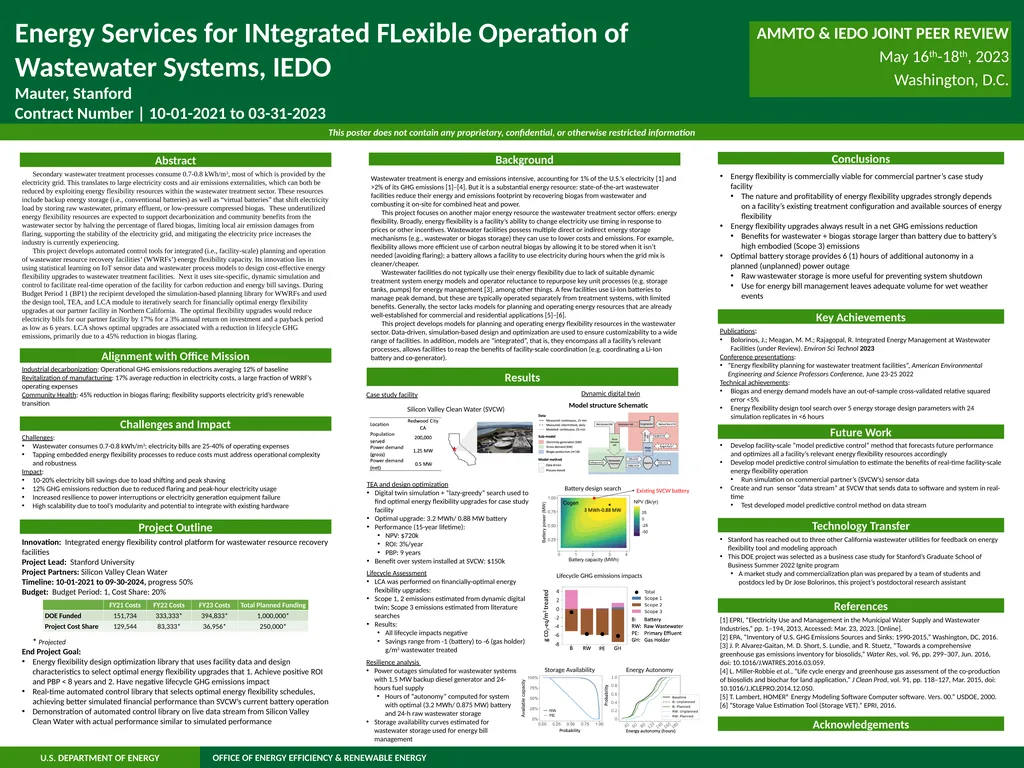
Energy Services for INtegrated FLexible Operation
Author: lois-ondreau | Published: 2025-06-27
Description: Energy Services for INtegrated FLexible Operation of Wastewater Systems, IEDO Mauter, Stanford Contract Number 10-01-2021 to 03-31-2023 Abstract OFFICE OF ENERGY EFFICIENCY RENEWABLE ENERGY U.S. DEPARTMENT OF ENERGY Secondary wastewater
Download Presentation
Download the PPT/PDF: Download
Transcript:
Loading transcript…